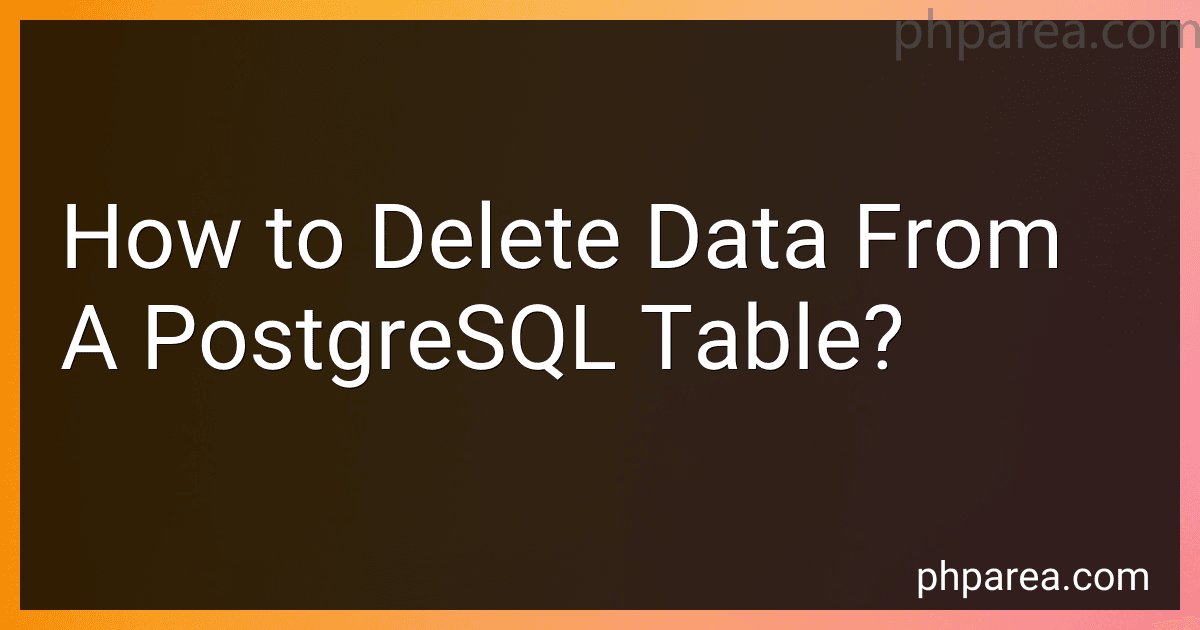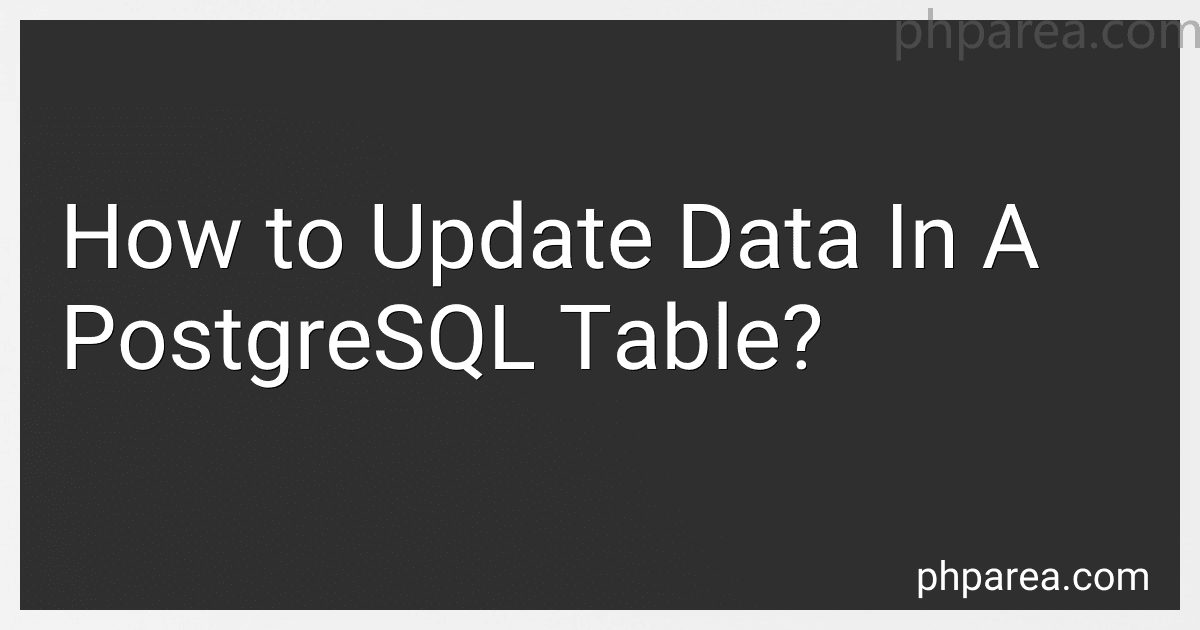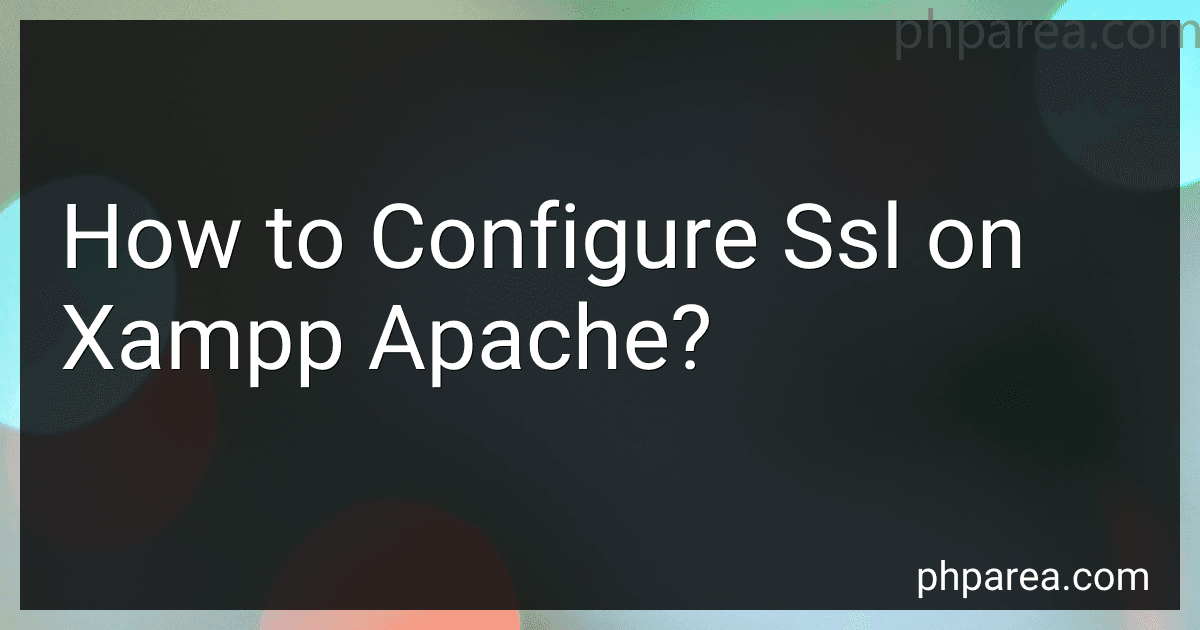PHP Blog
-
 5 min readTo perform a join operation in PostgreSQL, you need to use the JOIN keyword in your SQL query. There are different types of joins you can utilize including INNER JOIN, LEFT JOIN, RIGHT JOIN, and FULL JOIN.To execute a join operation, you need to specify the tables you want to join and the columns you want to join on. For example, if you have two tables "Table1" and "Table2" with a common column "ID", you can perform an INNER JOIN like this:SELECT Table1.column1, Table2.
5 min readTo perform a join operation in PostgreSQL, you need to use the JOIN keyword in your SQL query. There are different types of joins you can utilize including INNER JOIN, LEFT JOIN, RIGHT JOIN, and FULL JOIN.To execute a join operation, you need to specify the tables you want to join and the columns you want to join on. For example, if you have two tables "Table1" and "Table2" with a common column "ID", you can perform an INNER JOIN like this:SELECT Table1.column1, Table2.
-
 4 min readTo remove port 8080 in XAMPP, you can do the following:Open the XAMPP control panel.Click on the Config button next to the Apache module.Select the Apache (httpd.conf) option from the dropdown menu.Search for "Listen 8080" in the configuration file.Comment out this line by adding a "#" at the beginning of the line or deleting it completely.Save the changes and restart the Apache server.
4 min readTo remove port 8080 in XAMPP, you can do the following:Open the XAMPP control panel.Click on the Config button next to the Apache module.Select the Apache (httpd.conf) option from the dropdown menu.Search for "Listen 8080" in the configuration file.Comment out this line by adding a "#" at the beginning of the line or deleting it completely.Save the changes and restart the Apache server.
-
 3 min readTo drop an index in PostgreSQL, you can use the DROP INDEX statement followed by the name of the index you want to remove. Make sure you have the necessary permissions to drop the index. You can also specify the schema of the index if it is not in the default schema. After executing the DROP INDEX statement, the index will be deleted from the database and any queries that were using it will no longer benefit from its performance enhancements.
3 min readTo drop an index in PostgreSQL, you can use the DROP INDEX statement followed by the name of the index you want to remove. Make sure you have the necessary permissions to drop the index. You can also specify the schema of the index if it is not in the default schema. After executing the DROP INDEX statement, the index will be deleted from the database and any queries that were using it will no longer benefit from its performance enhancements.
-
 4 min readTo set a password for MariaDB on XAMPP, you can follow these steps:Open the XAMPP control panel and make sure that both the Apache and MySQL modules are running. Open a web browser and go to http://localhost/phpmyadmin Click on the "User accounts" tab at the top of the page. Click on the "Edit privileges" link for the user account you want to set a password for. In the "Change password" section, enter the new password in the "Password" field.
4 min readTo set a password for MariaDB on XAMPP, you can follow these steps:Open the XAMPP control panel and make sure that both the Apache and MySQL modules are running. Open a web browser and go to http://localhost/phpmyadmin Click on the "User accounts" tab at the top of the page. Click on the "Edit privileges" link for the user account you want to set a password for. In the "Change password" section, enter the new password in the "Password" field.
-
 4 min readTo create an index in PostgreSQL, you can use the CREATE INDEX statement. This statement allows you to specify the table on which you want to create the index, as well as the columns that the index will be based on.You can also specify additional options such as the type of index (e.g. B-tree, hash, etc.), as well as any constraints or conditions that you want to apply to the index.
4 min readTo create an index in PostgreSQL, you can use the CREATE INDEX statement. This statement allows you to specify the table on which you want to create the index, as well as the columns that the index will be based on.You can also specify additional options such as the type of index (e.g. B-tree, hash, etc.), as well as any constraints or conditions that you want to apply to the index.
-
 4 min readTo delete data from a PostgreSQL table, you can use the SQL command DELETE FROM table_name WHERE condition;. Replace table_name with the name of the table you want to delete data from, and condition with the criteria that the rows must meet in order to be deleted.For example, if you want to delete all rows from a table where the id column is equal to 1, you would use the following command: DELETE FROM table_name WHERE id = 1;.
4 min readTo delete data from a PostgreSQL table, you can use the SQL command DELETE FROM table_name WHERE condition;. Replace table_name with the name of the table you want to delete data from, and condition with the criteria that the rows must meet in order to be deleted.For example, if you want to delete all rows from a table where the id column is equal to 1, you would use the following command: DELETE FROM table_name WHERE id = 1;.
-
 7 min readTo set the max length of a JSON file in XAMPP, you can modify the upload_max_filesize and post_max_size variables in the php.ini configuration file. These variables determine the maximum size allowed for uploading files and post data to the server.You can locate the php.ini file in the php folder of your XAMPP installation directory. Open the php.ini file in a text editor and search for the upload_max_filesize and post_max_size variables.
7 min readTo set the max length of a JSON file in XAMPP, you can modify the upload_max_filesize and post_max_size variables in the php.ini configuration file. These variables determine the maximum size allowed for uploading files and post data to the server.You can locate the php.ini file in the php folder of your XAMPP installation directory. Open the php.ini file in a text editor and search for the upload_max_filesize and post_max_size variables.
-
 7 min readTo update data in a PostgreSQL table, you can use the UPDATE statement. This statement allows you to modify existing records in the table based on specified conditions.The basic syntax for updating data in PostgreSQL is as follows: UPDATE table_name SET column1 = value1, column2 = value2, ... WHERE condition;In this syntax:table_name is the name of the table you want to update.column1, column2, ..., value1, value2, ... represent the columns and values you want to update.
7 min readTo update data in a PostgreSQL table, you can use the UPDATE statement. This statement allows you to modify existing records in the table based on specified conditions.The basic syntax for updating data in PostgreSQL is as follows: UPDATE table_name SET column1 = value1, column2 = value2, ... WHERE condition;In this syntax:table_name is the name of the table you want to update.column1, column2, ..., value1, value2, ... represent the columns and values you want to update.
-
 6 min readTo configure SSL on XAMPP Apache, you first need to generate a self-signed SSL certificate. This can be done using the OpenSSL tool that comes pre-installed with XAMPP. Once you have generated the SSL certificate, you need to configure the Apache server to use the SSL certificate for secure connections. This involves editing the Apache configuration file (httpd.conf) to enable SSL and specify the path to the SSL certificate and private key.
6 min readTo configure SSL on XAMPP Apache, you first need to generate a self-signed SSL certificate. This can be done using the OpenSSL tool that comes pre-installed with XAMPP. Once you have generated the SSL certificate, you need to configure the Apache server to use the SSL certificate for secure connections. This involves editing the Apache configuration file (httpd.conf) to enable SSL and specify the path to the SSL certificate and private key.
-
 5 min readTo delete a column from a PostgreSQL table, you can use the ALTER TABLE command with the DROP COLUMN clause. This command allows you to remove a specific column from a table. Make sure you have the necessary permissions to alter the table structure before executing the command.
5 min readTo delete a column from a PostgreSQL table, you can use the ALTER TABLE command with the DROP COLUMN clause. This command allows you to remove a specific column from a table. Make sure you have the necessary permissions to alter the table structure before executing the command.
-
 5 min readTo create a subdomain in localhost XAMPP, you can start by opening the XAMPP control panel and making sure that Apache and MySQL services are running. Next, navigate to the "httpd-vhosts.conf" file located in the XAMPP installation directory. Open the file in a text editor and add a new VirtualHost block for your subdomain. Make sure to specify the subdomain name, document root, and other necessary configurations within the VirtualHost block.
5 min readTo create a subdomain in localhost XAMPP, you can start by opening the XAMPP control panel and making sure that Apache and MySQL services are running. Next, navigate to the "httpd-vhosts.conf" file located in the XAMPP installation directory. Open the file in a text editor and add a new VirtualHost block for your subdomain. Make sure to specify the subdomain name, document root, and other necessary configurations within the VirtualHost block.